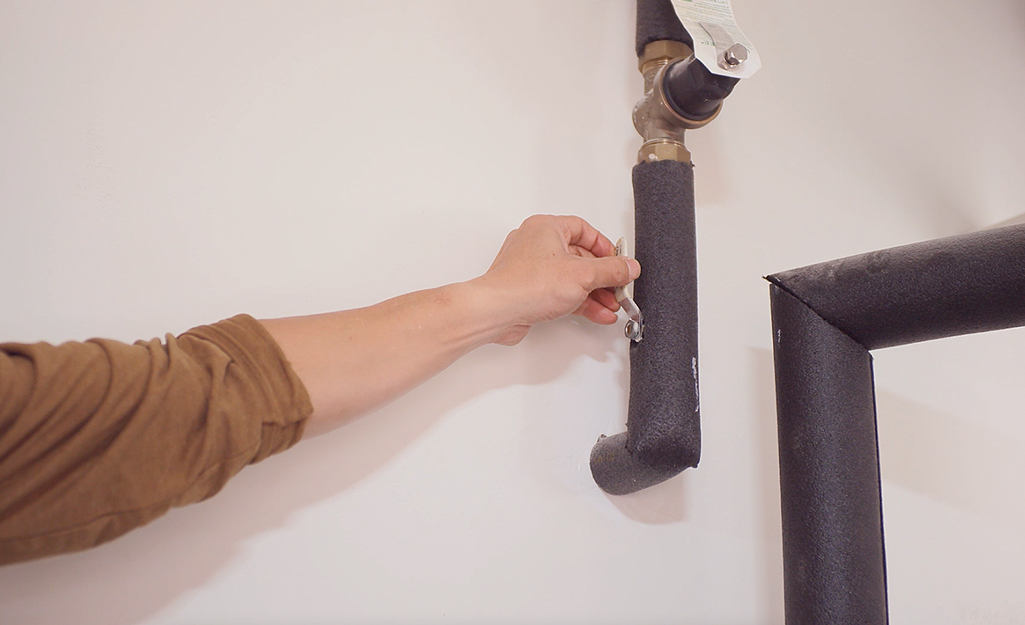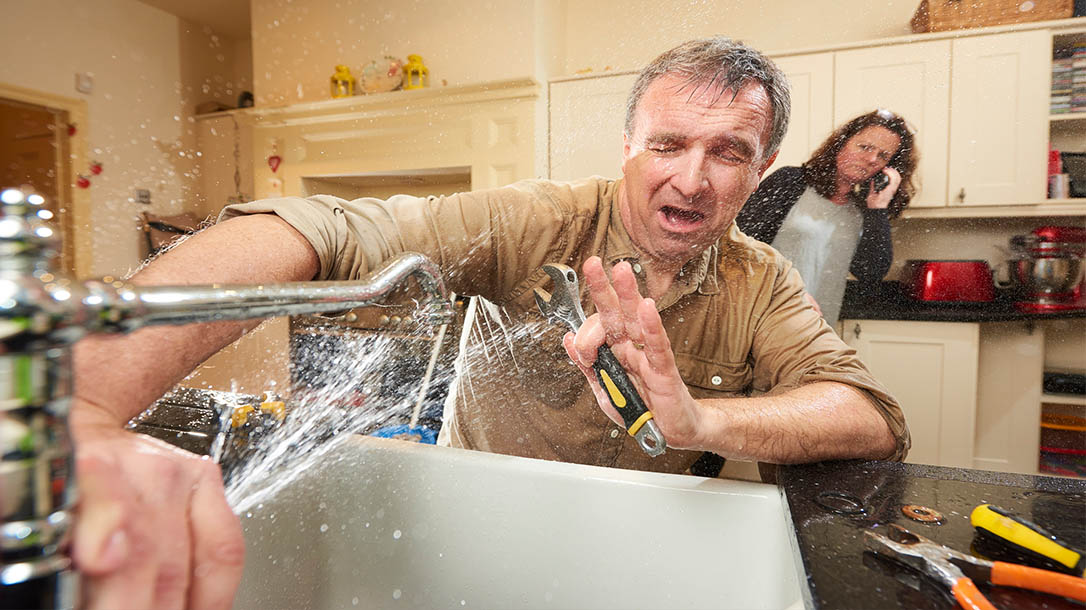Which It's Mandatory to Fix a Dripping Faucet
Which It's Mandatory to Fix a Dripping Faucet
Blog Article
Listed here down the page you can discover some worthwhile help and advice on the subject of Why It's Important to Fix Leaky Faucets.

Trickling faucets may feel like a minor trouble, yet their impact exceeds simply the nuisance of the audio. From wasting water to incurring unnecessary monetary prices and wellness risks, disregarding a leaking tap can cause numerous effects. In this write-up, we'll look into why it's vital to resolve this typical family problem immediately and successfully.
Wastage of Water
Ecological Effect
Dripping taps add considerably to water wastefulness. According to the Epa (EPA), a single tap leaking at one drip per second can throw away more than 3,000 gallons of water each year. This not only pressures water resources yet also impacts communities and wild animals dependent on them.
Step-by-Step Overview to Fixing a Dripping Faucet
Devices Required
Before trying to take care of a trickling faucet, gather the required tools, consisting of an adjustable wrench, screwdrivers, replacement components (such as washing machines or cartridges), and plumber's tape.
Common Faucet Issues and Their Solutions
Determine the kind of tap and the details issue causing the drip. Common issues include worn-out washing machines, rusty shutoff seats, or damaged O-rings. Describe supplier guidelines or on-line tutorials for detailed advice on fixings.
Financial Prices
Raised Water Costs
Past the environmental impact, dripping taps can blow up water expenses significantly. The built up wastage with time equates into greater energy expenses, which might have been avoided with prompt repair services.
Potential Residential Property Damage
In addition, extended trickling can cause damage to fixtures and surface areas surrounding the tap. Water accumulation can create staining, deterioration, and also architectural problems if left neglected, resulting in extra repair expenses.
Wellness Concerns
Mold and Mold Development
The constant existence of dampness from a trickling faucet produces a suitable atmosphere for mold and mildew and mold development. These fungis not only compromise indoor air high quality however likewise present wellness risks, particularly for individuals with respiratory conditions or allergies.
Waterborne Conditions
Stagnant water in leaking faucets can become a breeding ground for bacteria and various other virus, boosting the danger of waterborne illness. Contaminants such as Legionella bacteria grow in stationary water, potentially leading to significant health problems when ingested or inhaled.
DIY vs. Specialist Repair
Advantages and disadvantages of Do It Yourself Repair Work
While some might attempt to repair a dripping tap themselves, DIY repair services come with their very own set of difficulties. Without proper understanding and devices, DIY efforts can intensify the concern or lead to incomplete fixings, prolonging the issue.
Advantages of Working With a Professional Plumber
Employing an expert plumber makes certain that the underlying cause of the dripping faucet is dealt with successfully. Plumbing professionals have the proficiency and equipment to identify and repair faucet problems effectively, conserving time and lessening the danger of additional damage.
Environmental Obligation
Individual Contribution to Conservation
Taking responsibility for dealing with trickling taps lines up with wider efforts towards water preservation and environmental sustainability. Every individual's activities jointly make a considerable impact on maintaining valuable resources.
Lasting Living Practices
By prioritizing prompt fixings and embracing water-saving behaviors, individuals add to sustainable living practices that profit both present and future generations.
Safety nets
Regular Upkeep Tips
To prevent leaking taps, carry out regular maintenance such as cleaning up aerators, inspecting for leaks, and changing worn-out parts immediately. Additionally, think about mounting water-saving tools or upgrading to a lot more reliable fixtures.
Significance of Prompt Fixes
Resolving dripping faucets as soon as they're observed stops more water wastefulness and potential damage, inevitably conserving both water and cash in the future.
Influence On Home Value
Understanding of Well-Maintained Home
Preserving a property in good condition, consisting of attending to upkeep issues like dripping taps, improves its viewed value and worth amongst potential customers or renters.
Influence on Resale Worth
Features with well-kept plumbing fixtures, consisting of faucets, command greater resale worths in the realty market. Resolving trickling taps can add to a favorable impact throughout property inspections and negotiations.
Final thought
Dealing with a dripping faucet goes beyond simple comfort; it's an important action towards preserving water, lowering financial expenses, and guarding health and building. Whether through DIY repair services or specialist aid, taking action to repair leaking faucets is a little yet impactful method to advertise accountable stewardship of resources and contribute to a healthier, a lot more lasting future.
How to Fix a Dripping or Leaky Faucet
A leaking faucet is one of the most common problems that homeowners encounter, but it being commonplace doesn’t make it any less annoying. The constant drip drip drip of a leaking bathtub faucet, showerhead, or sink tap can disturb your home’s serenity. Left neglected, a dripping faucet can also result in higher water bills and discoloration or mold growth in your sink or plumbing fixtures.
Fortunately, you don’t have to be a trained plumber to know how to stop a dripping faucet. With some basic tools, replacement parts, and a little patience, leaky faucet repair is a breeze. In this article, we’ll explain what causes dripping faucets and how you can fix them.
What Causes a Leaking Faucet?
Kitchen and bathroom faucets come in all manner of designs, but most involve some combination of valves, O-rings, seals, and washers. The O-ring is usually the weakest link, but any one of these pieces can wear down over time. Heat, moisture, temperature fluctuations, minerals, mold, and movement can contribute to warping and corrosion, breaking the watertight seal. This just comes with the territory of being a homeowner. Everything is always subject to wear and tear, and some component parts of your appliances and fixtures need to be replaced on occasion. At least replacement O-rings are cheap!
More rarely, dripping faucets can be a symptom of excessively high water pressure. Were this the case in your home, you would probably notice that the leak is not isolated to one faucet. Water pressure issues are harder to resolve on your own. We recommend contacting a professional plumber if you suspect your water pressure is too high.
How to Fix a Dripping Faucet
Pipe wrench or monkey wrench Allen wrench set Screwdrivers Old towel or rag Shut off the water.
Before you do anything, you need to turn off the water to keep from drenching your kitchen or bathroom. You should find a valve under the sink and against the wall. Once you’ve turned this valve, try turning the faucet on to confirm that the water source has been cut off.
If you can’t locate your local valve for the faucet you’re working on, you can always shut off the water to the house at the main valve. Of course, this will prohibit anyone from using the sinks, showers, or toilets while you’re working on the faucet that’s giving you trouble.
Plug or block the drain.
You’ll be disassembling the faucet and removing some small bits of hardware. Plug the drain with a stopper or rag to avoid the possibility of a small screw falling into your P-trap.
Take apart the faucet assembly.
There are several varieties of kitchen and bathroom faucets, each with its own manner of assembly. For detailed instructions on how to disassemble your faucet, you can refer to the fixture’s manual or contact the manufacturer. If you know whether you have a ball, disc, cartridge, or compression faucet, you can find detailed schematics online.
In general, you need to begin by removing the faucet handles. You might notice a small screw that you’ll need to remove with a screwdriver or Allen wrench. If you don’t see any visible securing hardware, it’s likely hidden under a decorative cap that can be unscrewed or popped off with flathead screwdriver.
Remove each piece methodically, consulting a schematic when necessary. Take notes or arrange the pieces in such a way to make it easier to correctly reassemble the faucet later.
Remove the cartridge.
Once you’ve removed the handles and securing hardware, you should be able to remove the valve cartridge or stem. Some cartridges will slide right out. Other faucet models will require you to loosen a nut with a pipe wrench before you can remove the valve stem.
Examine the exposed hardware.
With the cartridge or stem removed, inspect the component parts. Check the rubber O-rings for wear and tear. Also examine the seat washer for corrosion or other damage. These pieces are usually the responsible parties for a dripping faucet, but it’s worth inspecting the other component parts while you have the faucet disassembled.
Find replacement parts.
Once you’ve identified which faucet component has failed, find an identical replacement. Your local hardware store should have O-rings, seat washers, and other standard components in stock. If you have a luxury or uncommon faucet, you may have to contact the manufacturer for a replacement part.
It’s a good idea to take your old parts with you to the hardware store so you can compare them with the store’s inventory and be sure you’re purchasing the correct replacement.
Reassemble the faucet.
With your new parts in hand, reconstruct the faucet and handles. Don’t be tempted to overtighten screws or nuts. You might think this could create a better seal, but it can instead damage or bend a delicate part of the assembly and create a new problem for you.
Turn on the water and test the faucet.
The only thing left to do is test your work. Unplug the sink, turn the water back on, and try the faucet. Congratulate yourself on a job well done!
https://www.libertyhomeguard.com/how-to-fix-a-dripping-or-leaky-faucet/

Do you appreciate reading up on What Causes Leaky Faucets & How To Fix Them? Place a comment down below. We would be glad to listen to your views about this blog. Hoping that you come back again in the future. Sharing is good. Helping people is fun. I appreciate reading our article about Leaky Faucets: Why They Happen & What to Do About Them.
Report this page